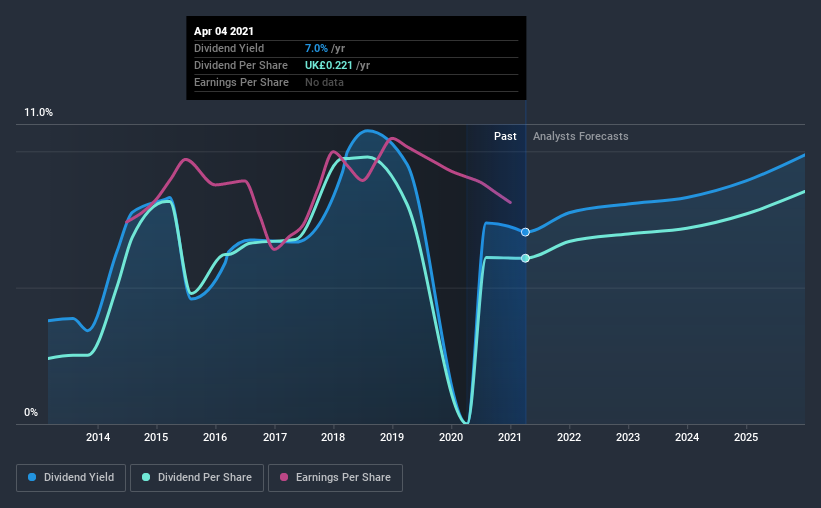Do These 3 Checks Before Buying Direct Line Insurance Group plc (LON:DLG) For Its Upcoming Dividend
Regular readers will know that we love our dividends at Simply Wall St, which is why it's exciting to see Direct Line Insurance Group plc (LON:DLG) is about to trade ex-dividend in the next 2 days. Investors can purchase shares before the 8th of April in order to be eligible for this dividend, which will be paid on the 20th of May.
Direct Line Insurance Group's next dividend payment will be UK£0.15 per share. Last year, in total, the company distributed UK£0.22 to shareholders. Based on the last year's worth of payments, Direct Line Insurance Group stock has a trailing yield of around 7.0% on the current share price of £3.141. Dividends are a major contributor to investment returns for long term holders, but only if the dividend continues to be paid. So we need to check whether the dividend payments are covered, and if earnings are growing.
Check out our latest analysis for Direct Line Insurance Group
Dividends are typically paid from company earnings. If a company pays more in dividends than it earned in profit, then the dividend could be unsustainable. Its dividend payout ratio is 86% of profit, which means the company is paying out a majority of its earnings. The relatively limited profit reinvestment could slow the rate of future earnings growth. It could become a concern if earnings started to decline.
Generally speaking, the lower a company's payout ratios, the more resilient its dividend usually is.
Click here to see the company's payout ratio, plus analyst estimates of its future dividends.
Have Earnings And Dividends Been Growing?
Stocks with flat earnings can still be attractive dividend payers, but it is important to be more conservative with your approach and demand a greater margin for safety when it comes to dividend sustainability. If earnings fall far enough, the company could be forced to cut its dividend. That explains why we're not overly excited about Direct Line Insurance Group's flat earnings over the past five years. We'd take that over an earnings decline any day, but in the long run, the best dividend stocks all grow their earnings per share.
Another key way to measure a company's dividend prospects is by measuring its historical rate of dividend growth. In the past eight years, Direct Line Insurance Group has increased its dividend at approximately 12% a year on average.
Final Takeaway
From a dividend perspective, should investors buy or avoid Direct Line Insurance Group? Direct Line Insurance Group's earnings per share have been essentially flat, and the company is paying out more than half of its earnings as dividends to shareholders. Direct Line Insurance Group doesn't appear to have a lot going for it, and we're not inclined to take a risk on owning it for the dividend.
Having said that, if you're looking at this stock without much concern for the dividend, you should still be familiar of the risks involved with Direct Line Insurance Group. Case in point: We've spotted 2 warning signs for Direct Line Insurance Group you should be aware of.
A common investment mistake is buying the first interesting stock you see. Here you can find a list of promising dividend stocks with a greater than 2% yield and an upcoming dividend.
This article by Simply Wall St is general in nature. It does not constitute a recommendation to buy or sell any stock, and does not take account of your objectives, or your financial situation. We aim to bring you long-term focused analysis driven by fundamental data. Note that our analysis may not factor in the latest price-sensitive company announcements or qualitative material. Simply Wall St has no position in any stocks mentioned.
Have feedback on this article? Concerned about the content? Get in touch with us directly. Alternatively, email editorial-team (at) simplywallst.com.

 Yahoo Finance
Yahoo Finance 
